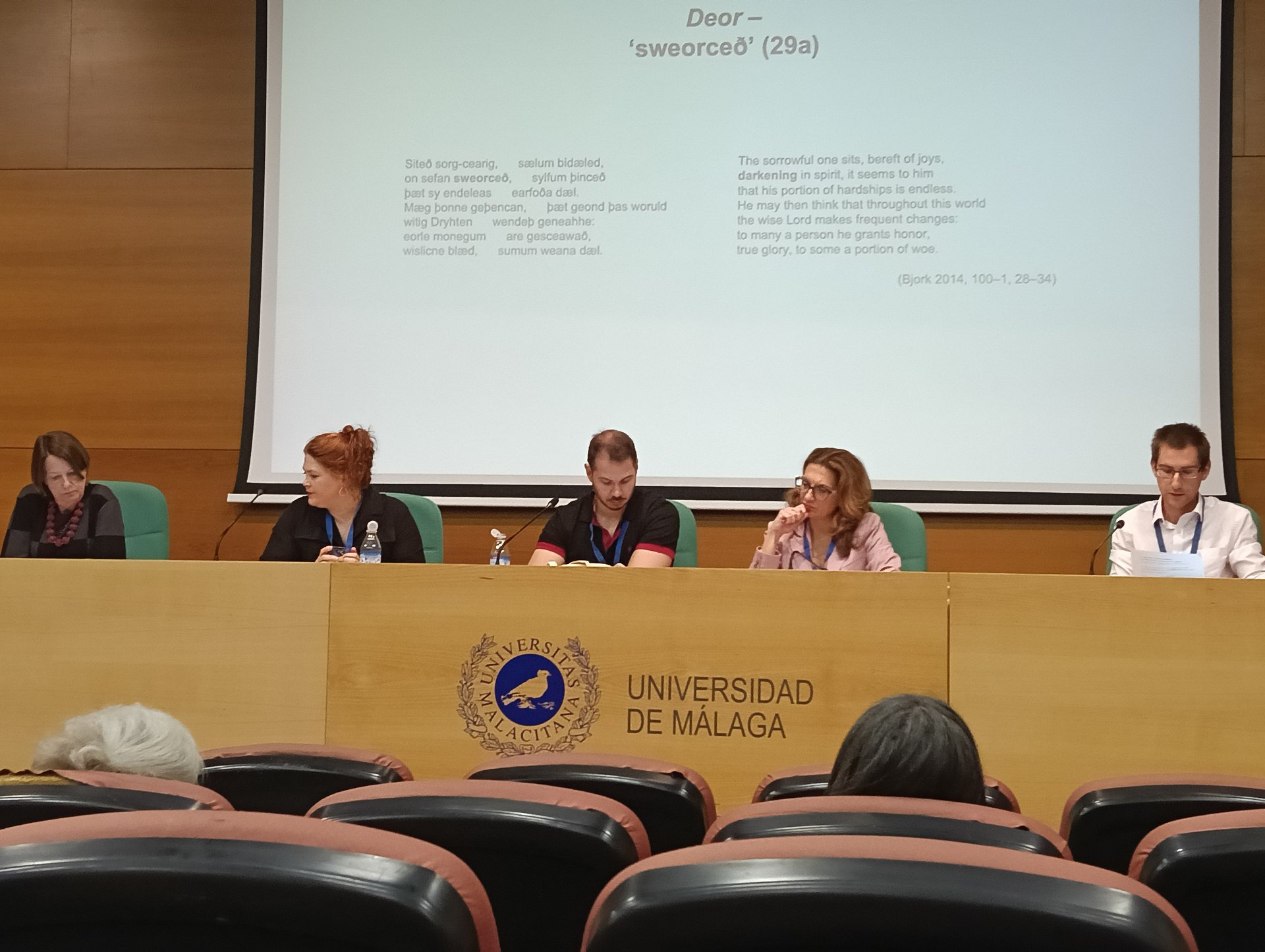Translation, Adaptation, Compilation: A Summer of Heteronomy and Autonomy
While spending most of the ‘long vac’ back home in Oxford, I devoted myself to preparing for a trio of academic trips building on my previous and current research. As mentioned in my first blog post, I was invited to lead an Oxford Tolkien Network seminar on the topic of metrically imitative translations of Beowulf. That summery late afternoon on June Friday 13 proved lucky for me as a surprisingly sizeable audience filed into the Sophia Sheppard Room of Magdalen College to attend my talk. While many translators of Beowulf employ accentual metre and alliteration to evoke the form of the original poem, I argued, few attempt to reproduce its metre and structure exactly. The few exceptions to this – by J.R.R. Tolkien, Ruth Lehmann, and Chris McCully respectively – were the focus of my talk, as well as Tolkien’s later prose translation of the poem. Through comparative analysis, my examination demonstrated how efforts to replicate Old English metre risk undermining other stylistic features and poetic effects typical of alliterative verse, ultimately distorting the original. In contrast, Tolkien’s later translation shows how prose, while less bound to formal imitation, may retain a double fidelity to both the sound and meaning of the original. This talk was recorded and uploaded onto YouTube and was based on an essay of mine that has since been published in the open-access journal SELIM. Speaking of which...
On September 24–26 I attended the 35th International Conference of the Spanish Society for Medieval English Language and Literature (SELIM) at the English Department of the University of Málaga. My talk focussed on just one word in the first of three extracts of a non-extant Old Saxon Genesis poem contained in the miscellaneous manuscript Palatinus Latinus 1447. This extract – Adam’s postlapsarian lament – corresponds to lines 790–817 of Genesis B, a translation from Old Saxon interpolated into the longer Old English poem Genesis in MS Junius 11. Scholarly comparative analyses of these texts have tended to reinforce the linguistic and nationalistic demarcation of separate Old English and Old Saxon alliterative verse traditions. My paper, however, intended to bridge them through the word gisuuerek/gesweorc [darkness], which appears in several Old English poems as well as in the Old Saxon gospel poem Heliand. Across these alliterative verse traditions, this word consistently signifies either a meteorological darkening of the sky or a spiritual darkening of the mind. I argued that in Adam’s speech these meanings converge – the darkened sky obscures God’s heavenly abode and Adam’s mind darkens in disobedience, with each ‘darkening’ betokening his detachment from God. Highlighting a word common to Old Saxon and Old English in a text translated from the former into the latter, I emphasised the special relationship between these alliterative verse traditions. But I wasn’t done yet ...
On October 24–25 I attended the 25th Studientag Englisches Mittelalter (SEM) at the English Department of the University of Zürich. On a pre-conference excursion to St. Gallen Abbey library, Dr. Annina Seiler exhibited several manuscripts containing Old English, one preserving the earliest extant version of Bede’s ‘Death Song’. My talk surveyed the Old Saxon alliterative verse texts in Palatinus Latinus 1447, comprising a fragment of Chapter 16 from the gospel poem Heliand plus the aforementioned Genesis extracts. The short extract on Adam’s postlapsarian lament is accompanied by two longer extracts on the fratricide of Cain and the destruction of Sodom respectively. I argued that the Heliand fragment, on the Beatitudes and Woes, complements this trio of Genesis texts to harmonise a sequence on the themes of transgression and divine retribution. The distinctive orthography of the Heliand extract suggests extensive scribal intervention in copying the texts into the manuscript as well as compiling them to form a thematically coherent sequence. Close reading the four alliterative verse texts comparatively, I explored their thematic interrelatedness as a monitory sequence motivated, in part, to discipline the recently Christianised Saxons. Indeed, the Genesis poetry of the Anglo-Saxons and their continental counterparts suggests a special interest in the antediluvian and postdiluvian ages as reflections of their immediate pre- and post-Christianisation experience. Examining alliterative verse conventions and scribal practice in Palatinus Latinus 1447, my talk further emphasised the theological and literary connections between Old English and Old Saxon culture. Altogether, then, my summer was spent exploring the intersection of heteronomy and autonomy in both old and new alliterative verse texts through processes of translation, adaptation, and compilation.


